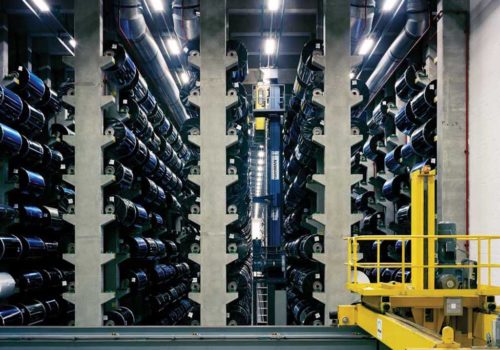We alive today are witness to the transformation of the world, from a place of physicality to a more conceptual space, a space that is as infinite as it is vast. With the promulgation of digital culture, the photograph has been liberated from the page. No longer is it an object held to is physicality. Now it exists in its ability to exist immediately and simultaneously everywhere at once. Art in the age of digital reproduction has virtually destroyed an industry, and forever altered the form. It is now that the days of film, paper, and processing have been rendered obsolete, though they retain their charms so much so that the ubiquity of photography now allows us to reconsider our assumptions of the art. So much so that it becomes a subject worthy of contemplation and veneration itself. Stand witness to the death knell of an industry and record its last days for posterity.
Robert Burley traveled the world with a 4×5 field camera to document the factories that were shutting down en masse. The Disappearance of Darkness: Photography at the End of the Analog Era (Princeton Architectural Press) presents seventy-one of Burley’s large format photographs inside and on the grounds of the plants that were closing down. Alongside the photographs are brief texts that set a tone for the story of worlds going, gone, slipping forevermore into oblivion, and we feel a sense of the complete vastness of this loss in the large scale buildings, estate planning, and the detail of design itself. From the buildings we see the very life of business itself.
The people. They are gone. There is nothing more to be done. Befitting it is, then, that Hurley should include George Eastman’s suicide note, found on his bedside table that read, “To my friends my work is done why wait?” And then we turn the page, and we see a double page spread of crowds standing outside of Buildings 65 and 69 at Kodak Park, in Rochester New York. In the second frame, the buildings are imploded. It was October 6, 2007. Through Burley’s camera we witness the detail of the debris and notice the bulldozer nestled into the back corner, ready to get to work. Though the buildings are gone, the land is good, and the show must go on.
As Burley notes, “By 2012 a number of smaller companies had begun to establish themselves in the Park, namely those started by former Kodak employees who had taken early retirement or been laid off as the company downsized. Soon this cluster of modest businesses, with operations ranging from manufacturing solar cells to making spaghetti sauce, employed about 6,500 people, a figure outnumbering Kodak’s remaining Rochester workforce.”
It is all rather grim, for those who remember , who enjoyed the countless options that working in film and papers could once afford. From some angles it appears we fixed something that was not broken, but the end result was the same. People voted with their wallets, and the time and expense of film dug its own grave. Yet at the same time, they continue, now in a new and unexpected way. The 4×5 camera is alive and well, standing tall before buildings no longer needed to serve the world. Now it is not a matter of industry, but of the individual, or the artists and the authors and the publisher, all of whom have a story to tell.
The Disappearance of Darkness is a light at the end of the tunnel. It is a photography book. It exists only in print. In inks on paper at a time when people declaim, “Print is dead!” and yet, the medium lives on. It speaks now, more than ever, to people who understand the importance of the tangible. Of that which is to have and to hold, which exists in real time and space, and is non-transferable. Of the very idea that the mechanical reproduction holds a value we did not previously esteem. Of an understanding of the edition, printing of photograph in book form, of the ways in which the very act of turning the page teaches us how to look at the world.
BOOK
The Disappearance of Darkness
Photography at the End of the Analog Era
Robert Burley
ISBN 9781616890957
Publication date: October 2012
10.6 x 8.5 inches (26.9 x 21.6 cm), Hardcover
160 pages, 65 color illustrations
$ 50
http://www.papress.com/html/book.details.page.tpl?isbn=9781616890957
http://missrosen.wordpress.com
















